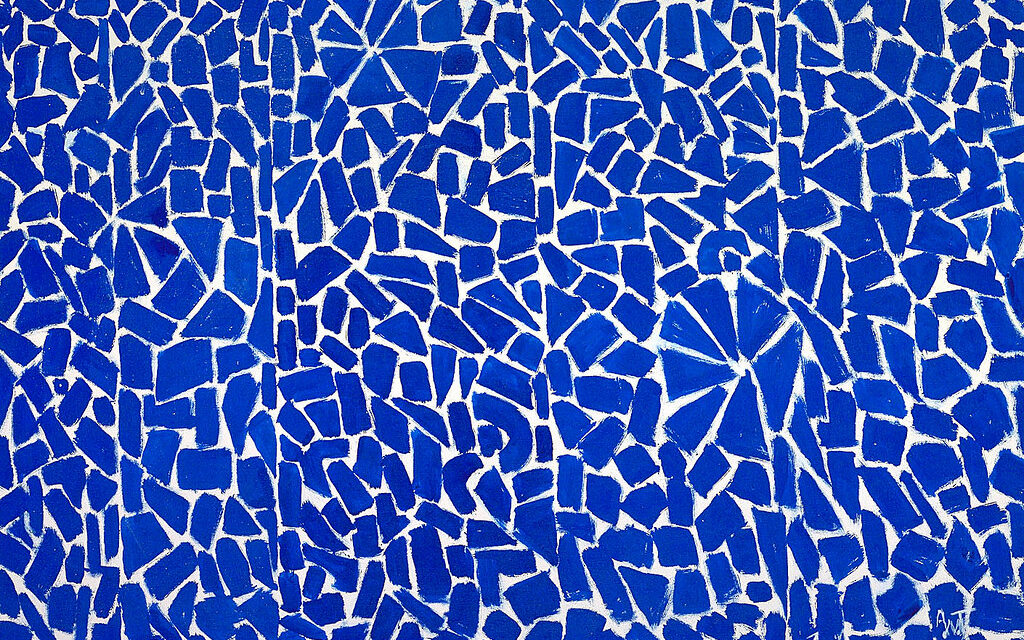Various Black artists have made their mark on the creative world throughout history; unfortunately a large number of them are overshadowed by their white counterparts. One of the most prominent victims of this is Alma Thomas, an African American abstract expressionist artist and teacher.
Thomas, also known as Alma Woodsey Thomas, was born on Sep. 22, 1891, in Columbus, Georgia. She was the oldest of four daughters. Her mother was a dress designer, while her father was a businessman . Thomas displayed many creative talents as a young child. She made small pieces of artwork such as plates, puppets and sculptures, all primarily made from clay.
When she was 16 years old, Thomas and her family moved to Washington, D.C. due to the growing racial violence in Georgia. Due to Thomas and her family leaving their upper-middle-class lifestyle and home back in Columbus, their socioeconomic status was lowered. Despite this, Thomas and her siblings were able to receive a good education through the Washington public school system. This was an opportunity that the Thomas siblings didn’t have in Georgia.
At the age of 30, Thomas enrolled at Howard University to get a higher education in fine arts. She was taught by other Black artists; some notable ones including James V. Herring and Loïs Mailou Jones, founders of Howard’s art department. Thomas graduated from Howard in 1924, and was the university’s first Fine Art’s department graduate. Soon after graduating, she began teaching art at Shaw Junior High School where she maintained a three-and-a-half-decade career. Thurlow Tibbs, a D.C.based African American art dealer, described this era of teaching as a “fermenting period,” since she absorbed a lot of artistic ideas and was influenced by those around her.
Throughout her teaching career, Thomas continued to involve herself with the artistic community, as well as the African American intellectual community. She would travel to New York City to view different art museums and galleries. During the summers of 1930, through 1934, she attended the Teachers College of Columbia University, where she earned her Masters in Arts Education.
In 1936, she created an organization called the School Arts League Project, which specialized in allowing children to have more artistic opportunities. She even aided in founding the first successful Black-owned museum, Barnett-Aden Gallery, alongside James W. Herring and Alonzo J. Aden.
Once Thomas retired from teaching in 1960, she began her full-time professional art career. She often worked in a small living room in her home, and would occasionally create art pieces in her kitchen. Her work commonly emphasized the concept of color theory, and she used abstraction to depict real-life things that would inspire her, such as gardens and even the moon landing of 1969. She had a particular mosaic style of painting that she’d carry out, using dramatic colors to create energy and contrast in her artwork.
At the age of 81, was the first African American woman to have a solo exhibition at the Whitney Museum of American Art. She also had an exhibition at the Corcoran Gallery. Thomas gained notoriety within the art community after these exhibitions, and New York City critics began praising her artwork, saying that they were “expert abstractions tachiste in style, faultless in their handling of color.” She became an iconic figure for both Black artists and female artists alike.
Alma’s prosperous life came to an end on February 24, 1978, at the ripe age of 86. She had remained in the family house that she and her family resided in when they’d first moved to Washington, D.C. in 1907. Her reputation has grown since her death and her art has been displayed in various notable art museums, galleries and solo exhibitions. One of her paintings was even included in the White House art collection during Obama’s presidency. Though she passed over 40 years ago, she continues to inspire the minds and touch the hearts of many people to this day.



